#african american prison movies
Note
there is a version of masters of the air that traces the tuskegee airmen and the 100th bomber through the war in parallel stories that merge in the prison camp that actually seriously analyzes racism at the time and as it exists today in our historicization and mythmaking around wwii. perhaps even a version that does justice to civilian resistance movements. and instead we have.
i appreciate you saying this bc i think it needs to be talked about more, but if you could link the other version you talk about? i would leant to watch it, thank you!
hi! what i actually meant in this post was that there could have been a version of this masters of the air show that did what i was talking about in that post, not that a show like that existed. i apologize for that -- i am now realizing my original post was worded very poorly 😭
from a quick google search there are two movies made about the tuskegee airmen: the tuskegee airmen (1995) and red tails (2012), though i haven't seen either. im sure books also exist, but i am not the one to ask about this. if anyone out there has more resources please share!
i will also take this opportunity to direct attention to tuskegee university's online photography collections, which has work from prominent early black photographers. i took a class on african-american photography last semester, and the tuskegee institute came up specifically when we were discussing w. e. b. dubois's display on african american life at the 1900 paris exhibition. the goal here was to directly confront the racist and dehumanizing exhibition of black and indigenous people in colonial exhibits by showing african-american life georgia, which included a number of universities including tuskegee. all the materials (i think?) are at the library of congress and available for browsing here. if you are interested in learning more about this (or black photography in general), deborah willis and shawn michelle smith have written on this exhibition and black photography more widely (deb willis is The scholar for most things black photography, and she is an incredible photographer in her own right.)
also while i'm at it. through a lens darkly (2014) is a documentary on black american photography directed by the practicing photographer, filmmaker, and scholar thomas allen harris. we also watched this for my class, and it looks at the history of black photography and incorporates contemporary artists frequently. great introduction to the field!
#sorry this became about photography i just know more about it and did not want to answer this w nothing productive lol#ask
12 notes
·
View notes
Video
youtube
After 246 Years of Slavery, What Could Reparations Look Like Today?
As the debate around reparations intensified in California, members of the Black community stepped forward to share their perspective on what should be done to address systemic racism. In the final episode of our series on reparations, we learn how citizens in other states have held organizations and communities accountable for past wrongs.
The video is a look at how reparations can be accomplished. And now that the California Reparations Task Force has delivered its landmark 1,200-page report with 115 recommendations for reparative measures, it will be up to the state Legislature — and pressure from community organizers — to keep the momentum moving toward restitution.
Documentary “Reparations Now!”, which follows the journey of the California task force studying how the U.S. can make long-overdue reparations for slavery: https://tubitv.com/movies/100005110/r...
End Slavery in California Act Coalition: https://endslaveryincalifornia.org/ California reparations task force final report reading (chapter 15, part 1). Examples of other reparatory efforts. Reading by Raphael H. Plunkett: • CA Reparations Report: Chapter 15 Par...
Reparations educational resources via California Reparations & Reparative Justice for Black/African American Descendants of U.S. Chattel Slavery: https://www.cjec-official.org/education Gold Chains: T
he Hidden History of Slavery in California | ACLU NorCal https://www.aclunc.org/sites/goldchai... California Reparations Task Force Report: https://oag.ca.gov/ab3121/report 13th (full feature). Combining archival footage with testimony from activists and scholars, director Ava DuVernay’s examination of the U.S. prison system examines how the country’s history of racial inequality drives the high rate of incarceration in America: • 13TH | FULL FEATURE | Netflix A discussion of the way the 13th amendment has effectively continued the practice of slavery in America since the end of the Civil War: • Experts Explain the Slavery Loophole ...
#youtube#Reparations#After 246 Years of Slavery What Could Reparations Look Like Today?#Reparations for Freedmen#Freedmen
22 notes
·
View notes
Text
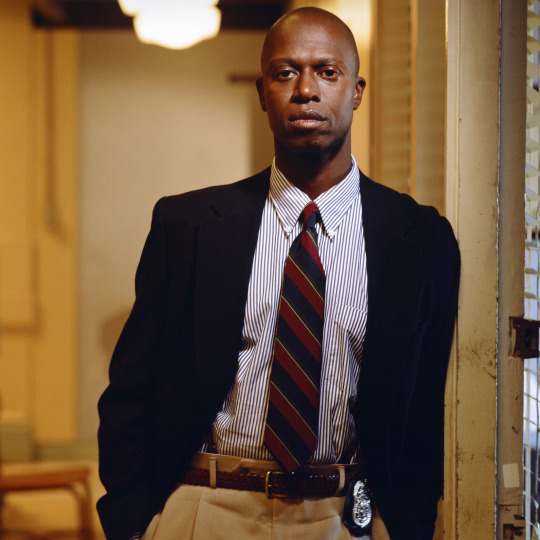
The career of the actor Andre Braugher, who has died of lung cancer aged 61, was benchmarked by two performances in police dramas a generation apart. In the groundbreaking drama Homicide: Life on the Street, from 1993 until 1999, he played Detective Frank Pembleton, whose drive immediately made him the anchor of an impressive ensemble cast led by Yaphet Kotto and Ned Beatty. He drew a younger audience with the comedy Brooklyn Nine-Nine (2013-21) as Captain Ray Holt, who takes over a chaotic homicide squad and whose intensity again makes him the heart of the show.
Braugher’s deep, resonant voice and seemingly effortless control drew the respect of all he worked with. David Simon, creator of Homicide and The Wire, said: “I’ve worked with a lot of wonderful actors. I’ll never work with one better.” His classical training, at the Juilliard School in New York, made him a regular at the Public Theater’s Shakespeare in the Park, and indeed his portrayal of Henry V in 1996 won him an Obie (the off-Broadway equivalent of the Tony awards).
He brought the projection of the stage to the small screen. Pembleton was the master of “the Box”, or the interrogation room. He explained to his rookie partner in Homicide (played by Kyle Secor), it was “salesmanship … as silver tongued and thieving as ever moved used cars, Florida swamp land or Bibles. But what I am selling is a long prison sentence.” He dominated those small scenes, but the episode Subway, with Vincent D’Onofrio as a character pushed between subway trains, who will die once the trains are separated, was a two-hander whose intensity might have come from the stage of Beckett, Pinter or Mamet.
In Brooklyn Nine-Nine, as Holt, he played it straight in two senses. The adage of comedy being funniest when played straight gained resonance from Braugher’s ability to show the audience with a gesture or line-reading that he, like you, got the joke. But Holt is also gay. His gayness is never an issue, except as motivation for his progress within the police. It was as if Pembleton were stepping into Kotto’s “Gee” Giardello, a black man with an Italian father who was determined to rise in a white-dominated department.
This drive reflected Braugher’s own background. In the tough neighbourhood of Austin, on Chicago’s West Side, both his parents worked for the government; his father, Floyd, was a heavy equipment operator for the state of Illinois, and his mother, Sally, worked for the US Postal Service. He recalled he might have “pretended I was hard and tough and not square”, but he won scholarships to the Jesuit St Ignatius College prep and then to study mathematics at Stanford University, California. After walking into a student production of Hamlet, and playing Claudius, he decided he wanted to act.
Another scholarship took him to Juilliard. He graduated in 1988 and almost immediately was cast in a TV revival of Kojak, as his assistant. His first film role came in Glory (1989); he was so impressive as the educated Thomas Searles, forced to serve as a private soldier in the all-black regiment commanded by his white friend, that Hollywood came calling, but the parts were standard stereotyical roles. His father had questioned how a black actor would make a living, and Braugher later explained: “I’d rather not work than do a part I’m ashamed of.”
He played the lead in a TV movie, The Court-Martial of Jackie Robinson (1990), playing Robinson, the first African-American player in major league baseball, who earlier in the 1940s, as a US army lieutenant, had refused to ride in the back of a segregated bus; and appeared in another TV film, The Tuskegee Airmen (1995). He was an egotistical actor in Spike Lee’s Get On the Bus (1996), about the Million Man March on Washington DC the year before. In 1998 he won his first Emmy award for playing Pembleton; he was nominated 11 times, and won his second in 2006 for his role in the miniseries Thief.
After Homicide, he starred as a doctor in Gideon’s Crossing (2000-01), as a cop in Hack (2002-04), as a car dealer in the comedy-drama Men of a Certain Age (2009-11) and as the captain of a submarine which goes on the run after he refuses to obey orders to fire nuclear missiles in Last Resort (2012-13). He had another series of remarkable two-handers in a recurring role as Hugh Laurie’s psychiatrist in House, was a defense attorney in episodes of Law and Order: Special Victims Unit, and voiced Governor Woodchuck Coodchuck-Berkowitz in the animated comedy BoJack Horseman.
He made the most of supporting roles in films such as Primal Fear (as Richard Gere’s investigator), Poseidon (captain of the sinking liner), Salt (as the US secretary of defense) and most notably as a New York Times editor in She Said (2022), covering the Harvey Weinstein scandal. He also starred in 10,000 Black Men Named George (2002), the story of the unionisation of Pullman railway porters, who were always called “George” by passengers.
Braugher admitted that his career “could have been larger, but it would have been at the expense of my own life”. He lived in suburban New Jersey with his wife, the actor Ami Brabson (who played Pembleton’s wife in Homicide). He said he wanted his three sons, Michael, Isaiah and John Wesley, raised in a “true context”, away from being a movie star’s offspring in Hollywood.
He is survived by his wife and sons, his brother, Charles, and his mother.
🔔 Andre Keith Braugher, actor, born 1 July 1962; died 11 December 2023
Daily inspiration. Discover more photos at Just for Books…?
14 notes
·
View notes
Text

“Don't ever let injustice go by unchallenged," his mother told him.
He was a rebel, a self-described “angry misfit”.
He and a friend would survive an ambush by KKK members who tried to force their vehicle off the road.
Born in Manhattan on March 1, 1927, and raised in Depression-era Harlem, he said he spent his life “in a constant state of rebellion.”
“His parents were mixed-race undocumented immigrants who constantly changed jobs, apartments and even their names to avoid authorities,” wrote Andrew R. Chow in Time Magazine. “Throughout my childhood we lived an underground life, as criminals of a sort, on the run,” [he would] write in his 2011 memoir.
Life for him as a child “was rife with hardship and sorrow, . . . His alcoholic father beat him bloody; his schoolyard years were full of fights waged with “bottles, garbage cans, rocks, hands and feet.” When he was a toddler, he accidentally cut himself in the eye with scissors, blinding himself in one eye for the rest of his life. [He] was also dyslexic, and his poor eyesight led him to drop out of school in the ninth grade, leaving him few career prospects.”
Poverty “defined” him, he wrote in his memoir.
“A day after his 17th birthday, he enlisted in the Navy and soon was disabused of romantic notions of military fellowship,” wrote Adam Bernstein of The Washington Post. “Minor infractions landed him for two weeks at the Naval Prison in Portsmouth, Va., where he saw German POWs receiving better treatment.”
“The injustice of this sickened me,” he wrote, adding that the experience “radicalized” him politically.
“Despite his service he was often turned away from segregated restaurants or concert venues.”
“The all-too-frequent incidents of prejudice kept me in an almost constant state of simmering rage,” he wrote.
When he returned, he found work as a janitor in a Harlem apartment building. A grateful tenant gave him tickets to the American Negro Theatre, where he started connecting with like-minded people. One of those, another janitor at the theater, became a life-long friend.
While looking for an acting job, he and his newlywed wife lived on her teacher’s salary in a $55-a-month apartment.
“In the meantime, he found a mentor in the African American entertainer Paul Robeson, a leading activist for civil and union rights who was hounded by federal authorities for his alleged socialist sympathies,” wrote Bernstein. Urged by Robeson, [he] began using folk songs to decry racism, poverty and other social ills.”
“In 1956, [he] decided to record an entire album of Caribbean island songs, much to the chagrin of his label, RCA, who felt it would be too “ethnic,” according to Chow. But [his album] was a runaway success: It made history as the first album to sell a million copies in the U.S., and embarked on a 99-week Billboard chart run that wouldn’t be matched until Michael Jackson’s Thriller more than a quarter-century later.”
Wrote Joshua Jelly-Schapiro of New York Magazine:
“In 1956, a Harlem-bred child of Caribbean immigrants [became] bigger than Elvis. But where Elvis built Graceland, [he] used the proceeds from [his album]” to assist a young Martin Luther King Jr. and his movement for civil rights. Along with his friend, the former janitor, Sidney Poitier, they became outspoken voices for justice and racial equality.
This Harlem-bred child of undocumented immigrants was born as Harold George Belanfanti Jr., but his parents had Americanized his name.
Harry Belafonte smashed “a series of barriers during five decades as a movie, TV and stage star, “ wrote Bernstein. “His artistic and humanitarian work frequently overlapped, reflecting his belief that ‘the role of art isn’t just to show life as it is but to show life as it should be.’”
He became “a dynamic force in the civil rights movement,” according to the New York Times.
This is a new story from the Jon S. Randal Peace page to honor the life and achievements of Harry Belafonte, who died of congestive heart failure Tuesday, April 25, at the age 96 at his New York home, according to his longtime spokesman.
The Peace Page focuses on past and present stories—some seldom told, others simply forgotten, still others intentionally ignored. The stories and chapters are gathered from writers, journalists, and historians to share awareness and foster understanding—to bring people together—and, as such, they are available all year in the Peace Page archives with new stories appearing each week throughout the year. We encourage you to learn more about the individuals and events mentioned here and to acknowledge the writers, educators, and historians whose words we present. Thank you for being here and helping us share awareness.
~~~~~
Growing up, Belafonte would refer to “my people” as “gangsters”, but clarified that by saying, “I don’t mean major American crime; I mean, as an immigrant, if you can’t find work inside the law, you find work outside the law. Running numbers and so on. Which is, of course, a characteristic of the poor, who find ways to break the rules, since the rules are always stacked against them.”
When he joined the Navy in 1944, he was hoping for adventure and glory on the Eastern front of World War II. “But the armed forces were still segregated, with African Americans often relegated to dangerous grunt work like handling live ammunition.”
When he “later enrolled in the Dramatic Workshop of the New School of Social Research,” his classmates included “Marlon Brando, Walter Matthau, Bea Arthur, Rod Steiger and Tony Curtis,” according to writer Drew Weisholtz.
When he released his history-making album “Calypso,” he said “It’s a song about my father, my uncles, the men and women who toil in the banana fields, the cane fields of Jamaica.”
"The song is a work song," he said. "It's about men who sweat all day long, and they are underpaid. They're begging for the tallyman to come and give them an honest count: 'Count the bananas that I've picked so I can be paid.' When people sing in delight and dance and love it, they don't really understand unless they study the song — that they're singing a work song that's a song of rebellion."
"When people thought he was just singing about good times in the islands, he was always like infusing messages of protest and revolution in everything he did," John Legend said.
“There had never before been any singer that popular with White middle-class audiences as well as Black audiences,” the cultural critic and scholar Henry Louis Gates Jr. said in an interview. “In that sense, he was an agent of change, the musical voice of civil rights.”
“Using music to espouse universal brotherhood, Mr. Belafonte encouraged audiences to sing along to calypso, protest and chain-gang songs, the ballad ‘Danny Boy’ and the Hebrew folk song ‘Hava Nagila’, according to The Washington Post.
“A two-time Grammy Award winner, Belafonte also won a Tony Award for best actor in a featured role in a musical for ‘John Murray Anderson’s Almanac’ in 1954,” according to Weisholtz.
“The first Black producer in television, he also won an Emmy Award in 1960 for his special ‘Tonight with Belafonte.’ In 2015, he was recognized with a Jean Hersholt Humanitarian Award at the Oscars, giving him coveted EGOT status.”
Despite his popularity, Belafonte “still met with plenty of resistance, especially as he entered previously segregated spaces,” wrote Chow. “While walking up Coldwater Canyon while filming his first Hollywood role, Bright Road, he was arrested and charged with illegal loitering. In Las Vegas, he was turned away from the resort he was playing at and instead told to stay at a dingy colored motel across town. A Chicago club’s manager initially refused to let him into his own show.”
In one famous incident, “Mr. Belafonte and White British singer Petula Clark were performing a duet of the antiwar song ‘Paths of Glory’ on an NBC special,” according to Bernstein. “An advertising manager for the automaker Chrysler-Plymouth, which was sponsoring the show, objected when Clark spontaneously touched Mr. Belafonte’s arm.
“The executive, who interrupted the song and had called for a retake, was later reprimanded by Chrysler and called Mr. Belafonte to apologize. ‘Your apology comes 100 years too late,’ the singer replied. NBC kept the scene when the show was televised. Mr. Belafonte later told an interviewer, “It is essential to television and industries to know that people like [this] exist. I’m tired and frustrated by what I’ve had to go through in this medium.”
~~~~~
“At the height of his mainstream fame, Belafonte stepped back from entertainment to devote the bulk of his time to the burgeoning Civil Rights Movement,” according to Time Magazine. “He became a key economic engine and behind-the-scenes organizer for many of the sit-ins, freedom rides and marches that would sweep the South and propel social and federal change.”
“He became one of Martin Luther King Jr.’s most trusted confidants, serving as a mediator between King and John F. Kennedy’s White House; he stood at the front lines at the March on Washington and the final march from Selma to Montgomery.”
“Belafonte’s global popularity and his commitment to our cause is a key ingredient to the global struggle for freedom and a powerful tactical weapon in the civil rights movement here in America. We are blessed by his courage and moral integrity,” King once said.
“In the immediate wake of the Birmingham protests in 1963, when thousands of children were jailed by Bull Connor’s police forces, [Belafonte] raised hundreds of thousands of dollars and worked closely with King, Attorney General Robert Kennedy and union leaders to bail scores of children out of jail,” wrote Chow.
“He also brought Brando, Charlton Heston, Paul Newman and Tony Bennett to the 1963 March on Washington, where King delivered his ‘I Have a Dream’ speech — a critical show of White support that made King’s address all the more universal in its appeal,” according to the Washington Post.
And, he “used his friendships with Frank Sinatra, Marlon Brando, Lena Horne and Henry Fonda to raise more than $100,000 to fund the Freedom Rides in 1964 that challenged racial segregation in interstate transportation.”
This was the time he and Poitier sped down the highway as a pursuing group of the Ku Klux Klan fired gunshots at them.
“Whenever we got into trouble or when tragedy struck, Harry has always come to our aid, his generous heart wide open,” Coretta Scott King wrote of Belafonte in her autobiography.
Martin Luther King Jr.'s daughter Bernice King remembers, "When I was a child, Harry Belafonte showed up for my family in very compassionate ways. In fact, he paid for the babysitter for me and my siblings . . . I won’t forget.”
“Belafonte also persuaded JFK to approve airlifting a planeload of Kenyan students to America in 1961,” according to Joshua Jelly-Schapiro of New York Magazine.
Belafonte remembered, “We had the airlift, right. Myself, Jackie Robinson, Eleanor Roosevelt, and a woman called Cora Weiss. And we brought Kenyan students, before independence . . . we got them visas to enter American universities. And one of our lifts—and we didn’t have many—on one of those planes, we had Barack Obama’s father.”
“In the decades to come he would expand his empathetic push to a global scale, fighting against apartheid in South Africa, famine in Ethiopia, and genocide in Rwanda,” wrote Chow. “He became a UNICEF Goodwill Ambassador . . . and railed fiercely against the Iraq War.”
He “was also one of the driving forces behind ‘We Are the World,’ the star-studded charity single that raised more than $60 million for Ethiopian famine relief after its 1985 release,” according to Larry McShane and Peter Sblendorio of the New York Daily News. “He appeared in the video with an assortment of fellow musical legends, including Michael Jackson, Stevie Wonder, Bruce Springsteen, Ray Charles and Bob Dylan.”
And, speaking of Dylan, “during the recording of his 1962 album ‘Midnight Special,’ Belafonte brought in a recently-transplanted Minnesota musician to play harmonica. The young man, named Bob Dylan, made his recording debut playing on the title track.”
“At pivotal moments, he was one of the most critical supporters of the civil rights movement,” said Taylor Branch, a Pulitzer Prize-winning civil rights historian. “Harry was a strong force for keeping people on an even keel.”
“After King’s assassination in 1968, Mr. Belafonte became a roving humanitarian without portfolio,” wrote Bernstein. “He helped start TransAfrica, a lobbying group that pressed for economic sanctions against South Africa’s apartheid regime. He lobbied for the release of Nelson Mandela and then helped coordinate the future South African president’s first visit to the United States after his liberation in 1990.”
“Belafonte also created the Gathering For Justice in 2005 to stop child incarceration and put an end to racial inequity in the justice system,” wrote Weisholtz.
~~~~~
“There was never a performer who crossed so many lines as Harry,” Bob Dylan wrote in his 2004 memoir.
“He could play to a packed house at Carnegie Hall one night and then the next day he might appear at a garment center union rally,” Dylan wrote. “To Harry, it didn’t make any difference. People were people. He had ideals and made you feel you’re part of the human race.”
“You know,” Dylan added, “he never took the easy path, though he could have.”
“I wasn’t an artist who became an activist,” Belafonte reflected on his 90th birthday. “I was an activist who became an artist.”
Harry Belafonte was an activist into his 90s. He told NPR in 2011 that was something he learned from his mother.
"She was tenacious about her dignity not being crushed. And one day, she said to me — she was talking about coming back from a day when she couldn't find work. Fighting back tears, she said, 'Don't ever let injustice go by unchallenged.'"
"Harry Belafonte, a Trailblazer and Hero to us all," said Oprah Winfrey. "Thank you for your music, your artistry, your activism, your fight for civil rights and justice—especially risking your life back in the day to get money to the movement. Your being here on Earth has Blessed us all."
He once said, “I’ve always looked at the world and thought, ‘What can I do next? Where do we go from here? How can we fix it?’”
“And that’s still how I look at the world, because there is so much to be done.”
~ jsr
youtube
The Jon S. Randal Peace Page
33 notes
·
View notes
Note
Tbh I'm Black and I thought people shipping Namor and Shuri were just a bunch of cidhet White reylos. And from what I'm seeing it is the same for a lot of us. It's time to accept that Black people are going to be divided in this matter, and that's okay we don't all think the same. But we aren't getting anywhere assuming the haters are just white by default
I used to live on tumblr more but now I live on TikTok more and I've seen nothing but Black women discussing this ship and I didn't even know there was controversy around it until I got literally attacked lol. It's also weird to assume someone is white, period. I usually only assume someone is white when they're, like, on Twitter saying some outrageous Far Right political shit but preface it with "As a Black man,". (Or I assume they're a bot.)
Like, it's out of left field, to me. Idk how other Black women are taking it, but it's crazy, like literally delusional and insane, to me, to assume that I would make this blog years and years and years ago and just elect to be one of the most underrepresented and disrespected demographics of comics fans and superhero movie fans for fun so that I could... disagree with the fans of a movie that wasn't even in the realm of existing, yet. Like, I'm a white Reylo (I don't even like Reylo, or Star Wars fans at all tbh). I played the long game, pretending to like Iris West and Misty Knight and Valkyrie and defending Anna Diop and all of that... just so I could sneak my white ass in to ship Shuri with a character y'all find distasteful? I remember a few years back when people were shipping Shuri with Bucky and a lot of people objected, but I don't remember this level of vitriol and I don't recall anyone just trying to strip long-standing blogs of their identity over it. Marvel fans have always had disagreements and shipping has always been one of the biggest ones, but I've never, in my life, felt so attacked over an opinion that I don't even hold that strongly. Like I said, I don't care about the ship that much. I only said it was fun. I don't see how shipping 2 fictional people, even lightly, even in passing, is antiblack. Antiblackness is such a bigger thing than "you shipped characters I don't like".
Usually, we're fighting the opposite, which is nobody shipping the Black characters at all, or not liking any ships with Black characters, or treating the Black characters in the ship like the psychologist for the non-Black characters in the ship. I ain't never seen no shit like this. I didn't know y'all didn't like antagonist/protagonist ships that hard. I didn't come on here to convince anyone of anything, I just came here because it's usually a fun place to geek out about these movies and things. But, no, it's not fun. Y'all are on here making huge judgements of people over shipping... like Ryan Coogler wrote it that way. Talk to him, if it bothers you that much.
But to question my entire identity, my family, my political leanings, my loyalty to my community? It's sick. Like, I can't even defend myself. If I start saying, like, I was literally getting tear gassed at BLM protests in 2020, I sound ridiculous. If I say ACAB, I sound like I'm trying too hard to convince y'all I'm Black. If I talk about actual Black American issues I care about, like the school to prison pipeline, I sound like I'm just bringing up talking points. But you guys get to decide I hate myself and other Black women because of Shuri and Namor, a fictional African princess and a fish man who were written into a screenplay. Like, what fucking sense does that make?
Like, none of this is real, but I am a real person behind this account. Y'all are making me physically ill over this.
#Black Panther#shuri x namor#namor x shuri#anti blackness#shuri#like y'all are sick in the head#this is comics shit
85 notes
·
View notes
Text
The Forgotten History of Romani Resistance
May 15, 2015
By Pierre Chopinaud

On the evening of May 16, 1944, in the Auschwitz-Birkenau concentration camp, SS guards armed with machine guns surrounded the area of the camp designated for Roma and Sinti prisoners. Their intent was to round up the nearly 6,000 prisoners there and send them to the gas chambers. But when the guards approached the area, they were met with armed resistance from the inmates.
The prisoners had learned of the planned “liquidation” and fashioned weapons from sheet metal, wood, pipes, rocks, and any other scraps of material they could get their hands on. According to the memories of survivors and witnesses to the incident, the inmates forced the guards into retreat, and though some prisoners were shot that night, the act of resistance allowed the Roma and Sinti prisoners to put off execution for several more months.
How can such an epic episode have been lost to history? Who knows about the Sonderkommandos revolt of August 1944? Who knows about Witold Pilecki, who infiltrated Auschwitz to organize its resistance network? Keeping alive the memories of these events could help prevent such crimes from happening again in the future.
This is why La Voix des Rroms is raising awareness around May 16, the Romani Resistance Day in Europe. The Romani Resistance Day represents a change in the way Romani culture and identity appear in public space. This change comes from an understanding of this space as a political one, where a history of resistance replaces a history of oppression. We have urged Romani organizations across Europe to embrace this date: there are several events planned this year in Budapest; Lety (Czech Republic); and Paris, where we are organizing Romani Resistance Day (Fête de l’insurrection gitane) in collaboration with other stigmatized minorities like Muslims and blacks.
For too long, Roma people have been misrepresented by stereotypes: the beggar, the prostitute, the compassionate victim, the folkloric artist. Those stereotypes overshadow the nuances of Romani culture and identity, which have to be the result of political struggle. Romani cultural creation aims to challenge mainstream culture, identity, and representation, just as the African American civil rights movement in the United States changed the whole of America’s identity.
We must do all we can to promote Romani culture and identity. For more than four decades, Europe’s Roma communities have wanted to establish an institution that would give their traditions and creations their own stage. Across Europe, institutions exist to celebrate an array of cultures, nationalities, and identities, but there is nothing of this kind for Roma.
The European Roma Institute, recently proposed by the Open Society Foundations, the Council of Europe, and leading Roma organizations and figures, is a unique way to address this imbalance and give Romani traditions and creations their own stage.
In order to be successful, the European Roma Institute will need to tackle the breadth of Romani culture and identity. A lot has been done in the past to promote Romani culture with the help of an institutional framework, but it failed, in my opinion, because the specificity of Romani culture cannot be expressed using mainstream categories. There are some very specific features of Romani identity and culture that need to be addressed, like Romani humor; among all Roma, there is a common perception of the world, a common distance from society, as is exemplified in Charlie Chaplin movies—whose grandmother was, in fact, a Roma woman from England.
The main challenge of the European Roma Institute will be to deal with the tensions between unity (we are all “Roma”) and multiplicity (we all belong to the “landscape” or the territories we live in). That double belonging has always structured Romani identity. It needs to be fully addressed.
La Voix des Rroms is a grantee of the Open Society Foundations.
25 notes
·
View notes
Text
Bonnie and Clyde (1967) Blog Essay
By: Jillian Arnold
"This here's Miss Bonnie Parker. I'm Clyde Barrow. We rob banks."
The film, Bonnie and Clyde, is a well-known and controversial film that has been talked about for decades. The film follows a waitress, Bonnie Parker, as she falls in love with a criminal named Clyde Barrow, and together they begin a life of crime with each other in 1934. The film follows their life of crime as they rob Banks and pick up other people for their gang such as Buck Barrow, Clyde’s brother, and his wife, Blanche, as well as their getaway driver C.W. Moss. together, they form the barrel gang and fulfill a life of crime with robbing banks, stealing cars, and murder all through the country. The movie action keeps you on your toes throughout the entire film as they have close calls with the police catching them and as they go through the ups and downs of a life of crime.
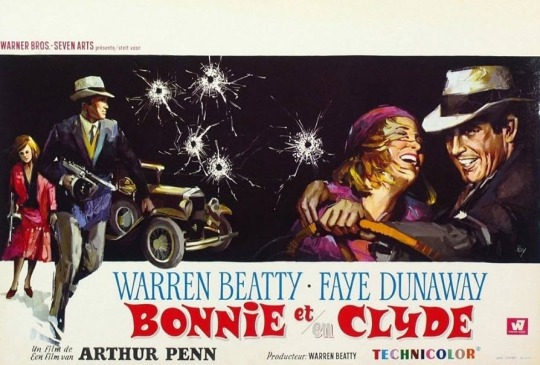
The film was directed by Arther Penn and starred Warren Beatty as Clyde Barrow and Faye Dunaway as Bonnie Parker. Even with the film’s R rating, it still did well in the box office and has become a beloved film. The film released on August 13th, 1967 and made $50,700,000 domestically, even with the film’s $2,500,000 budget. The film had 22 wins and 29 nominations, with Estelle Parson winning Best Actress in a Supporting Role at the Oscars and winning Best Cinematography at the Oscars as well.
The film is believed to follow the true story of Bonnie and Clyde, but in reality it is less than 5% historically accurate. Bonnie and Clyde did not emerge as full-blown figures that were instantly popular and were in every newspaper. In reality, they rarely tried to rob banks and in reality, their burglaries were committed in mom-and-pop grocery stores and filling stations along the back roads. What made them so popular was they were robbers during the Great Depression and made a bigger impact on people because everyone was so poor at the time and struggling. There are also other inaccuracies in the film, such as Bonnie had married at a young age and never got divorced while Clyde had done prison time early on and was on parole when he met Bonnie. The film did have its accuracies to their true story such as how honestly depicted the number of police and guards to it died in their bank robberies because Bonnie and Clyde had no aversions to kill when they thought they needed to.

An image of the real Bonnie and Clyde in the 1930s.
The film in 1967 was so controversial to audiences because the film opened the floodgates to heighten graphic violence in cinema and TV and de-glamorized what it means to die by being shot by bullets. The violence on this level had never been seen in the media before as well as the nudity in the film. The film was also controversial because of the release during the social unrest, the Vietnam war, and the civil rights movements in the United States. During the year there were protests and riots over America standings in the Vietnam war, which caused hostility and unease over the nation. There was also unjustness and unease with segregation in the unfair treatment of people of different races. With the violence happening in America at the time and the amount of violence in the film, it could’ve made people uneasy about the unstable times. But the unstable times could’ve also made people want to go to the movies, since it’s a classic thing to do with friends or family, so that’s also why I could’ve been a massive success.

People protesting on the streets about America’s standing in the Vietnam war and how they want America to pull out of it for the well-being of America and Vietnam.

Photo of African Americans fighting for fair treatment and to be equal to the white man because they shouldn’t be treated differently due to their skin tone.
The film was a controversial, but conventional film because it was based on real people, and the characters were portrayed by stars of Hollywood. The film handled portraying the real events of the story well and kept it historically accurate and with Warren Beatty and Faye Dunaway, it kept the story clear and interesting the whole time. Even though the film is conventional, it does not take away from all it’s earned and how great of a film it is, then and now.
“Why? What do you mean, ‘Why?’ Because you’re different, that’s why. You know, you’re like me. You want different things. You got somethin’ better than bein’ a waitress.”
2 notes
·
View notes
Note
Hey you can answer this tomorrow, but why women king was made…remember roots? I heard the og mc kunta kenta (Is that a real fucking African name?) didn’t understand what the Europeans was doing on the ports with slaves…even though he would have actually known-ooooh
But as you know that left a (bad) impact onto my community….but I keep realize one huge issue Africans have with my community is we try to keep the sanitize version of the slave trade we were taught even as middle age adults
Expect meee, god this pan Africa hurt us
Also people tried to compare women king to 300 and braveheart…haven’t seen braveheartt…but 300 was meant to be a glorified retelling of the battle of themployae
Women king have to twisted the entire course of history to write it
Roots managed to serve its purpose, at least the original one, suffered from extreme historical inaccuracies in places never saw the remake.
But as you know that left a (bad) impact onto my community….but I keep realize one huge issue Africans have with my community is we try to keep the sanitize version of the slave trade we were taught even as middle age adults
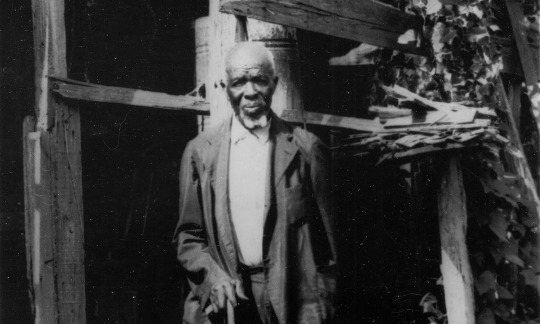
This is Oluale Kossola, his American name is Cudjoe Kazoola Lewis (he chose all but Lewis himself), he's the last known slave with distinct memories of life in Africa before being sold by the dahomey and put on a ship and smuggled into the US, human cargo was illegal by then but greedy and evil people on both sides of the Atlantic kept on doing it anyhow.
You can do some of your own reading if you like, but some highlights from his wiki page are.
In April or May 1860, his village was attacked and Lewis was taken prisoner by female warriors led by King Glele of Dahomey, during an annual dry-season raid for slaves. Along with other captives, he was taken to the slaving port of Ouidah and sold to Captain William Foster of the Clotilda, an American ship recently built in Mobile, Alabama, and owned by businessman Timothy Meaher. The importation of slaves into the United States had been illegal since 1808, but slaves were still routinely smuggled in from Spanish Cuba.
And this is from a article about a book about him
The pathos of the African American experience, told with such tenderness in Barracoon, is matched by its complexity. Hurston herself remarked that in writing Kossola’s harrowing account of how the king of Dahomey profited from raiding and selling members of neighbouring kingdoms, she was deeply affected by the question of African complicity in the slave trade. “The inescapable fact that stuck in my craw,” Hurston wrote, “was my people had sold me and the white people had bought me. That did away with the folklore I had been brought up on – that white people had gone to Africa, waved a red handkerchief at the Africans and lured them aboard ship and sailed away.”
One hell of a reality check right there
Also people tried to compare women king to 300 and braveheart…haven’t seen braveheartt…but 300 was meant to be a glorified retelling of the battle of themployae
ya if they wanted to do a Braveheart comparison they'd need to set it up so that the areas that the dahomey raided set up to fight againt the dahomey
Women king have to twisted the entire course of history to write it
Based on historical events, but we're not going to tell you that we did a 180 on who was doing what.
Could you imagine the fallout if someone made a accurate movie about that, painting all the perpetrators as what they were.
Wonder if finding out that if their ancestors hadn't been forced onto a boat there's a good chance they would have either been worked until they died or used as a human sacrifice might shift some viewpoints a little.
None of that is me expressing anything other than just curiosity, since this is tumblr and we piss on the poor who just want to read here I figure disclaimer is needed.
4 notes
·
View notes
Text

Jeepers Creepers (2001) 😱 28 years old at the time of this movie came out. It is about two college siblings by the name of Darry and Trish. They were going home for the holidays. Came across a mysterious truck that the license plate almost spelled out beating you. The man that stood there watching the car that drove by seeing if they saw the body wrapped up in a white tarp. Darry wanted to investigate. Trish just wanted to not make it her business. So, Darry stepped out of car and went down the pipes and found a corps; Darry wanted to rescue the man. It was too late. Something was taken from him. Long story short. The man was not a man. It was a creature that gets to eat every 23 years. Lungs to breath. Ate a prisoner leg to walk. At the end of the movie. Darry was screaming when the creature at his eyes. The creature was listening to jeeper keepers. Where did you get those peepers. Jeeper keepers where did you get those eye's. I am lover of horror movies. Have been all of my life. Grew up not in a typical African American household. My daddy loved horror movies. So do I.
4 notes
·
View notes
Text
Movies Set During Depression Era U.S.
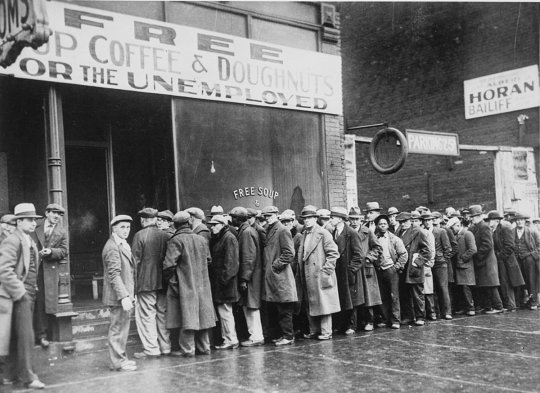
Below is list of movies set during the Great Depression here in the U.S. The list is in chronological order and . . . you might find them interesting:
MOVIES SET DURING DEPRESSION ERA U.S.
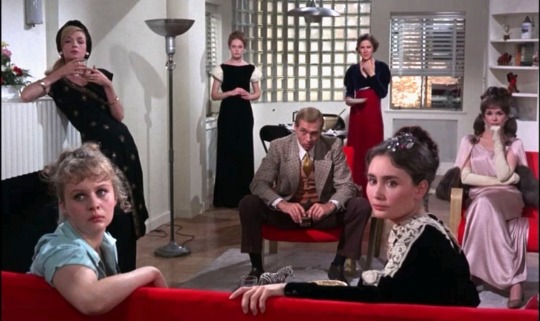
1. “The Group” (1933) - This movie is an adaptation of Mary McCarthy’s novel about a group of friends and Vassar College graduates between 1933 and 1940. Sidney Lumet directed.
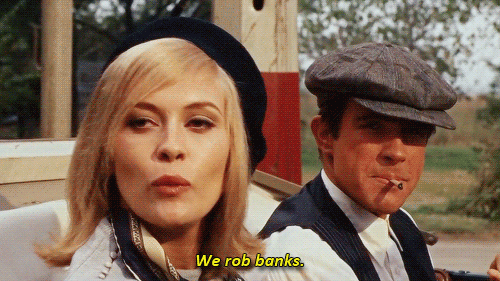
2. “Bonnie and Clyde” (1967) - Warren Beatty and Faye Dunaway starred in this biopic about the infamous Depression-era bank robbers, Bonnie Parker and Clyde Barrow. Arthur Penn directed.
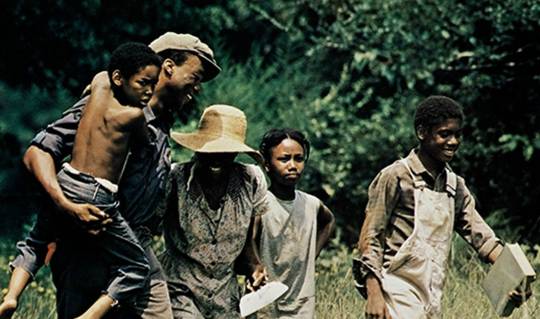
3. “Sounder” (1972) - Martin Ritt directed this adaptation of William H. Armstrong’s 1969 novel about the struggles of an African American sharecropper family in the Deep South, during the Depression. Paul Winfield, Cicely Tyson and Kevin Hooks starred.
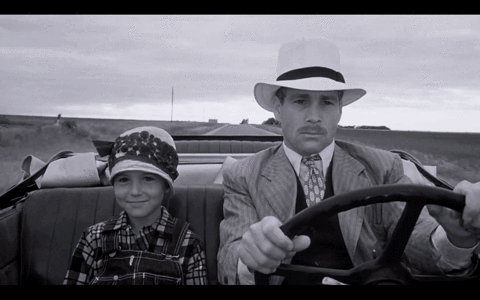
4. “Paper Moon” (1973) - Ryan and Tatum O’Neal starred in this comedy-drama about a pair of grifters on a road trip in the Midwest, during the Depression. Peter Bogdanovich directed.

5. “The Sting” (1973) - Paul Newman and Robert Redford starred in this Best Picture winner about a group of grifters who set up a major con against a crime lord responsible for the death of a friend. George Roy Hill directed.
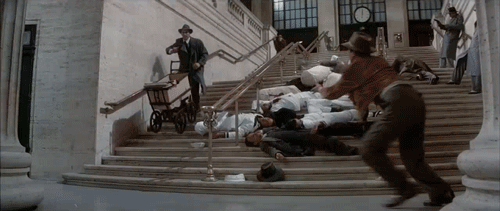
6. “The Untouchables” (1987) - Brian De Palma directed this account of U.S. Treasury Agent Elliot Ness’ investigation into crime lord Al Capone’s bootlegging operation in Chicago, during the last years of Prohibition. Kevin Costner, Sean Connery, Charles Martin Smith, Andy Garcia and Robert De Niro starred.

7. “O Brother, Where Art Thou?” (2000) - Joel and Ethan Coen wrote and directed this satire set prison escapees in 1937 Mississippi, which was loosely based on Homer’s poem, “The Odyssey”. George Clooney, John Tuturro and Tim Blake Nelson starred.
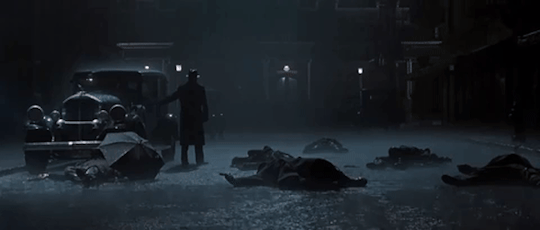
8. “Road to Perdition” (2002) - Sam Mendes directed this adaptation of Max Allen Collins’ 1998 graphic novel about a mob enforcer, who seeks vengeance for the deaths of his wife and younger son, while protecting his older son, a murder witness. Set in 1931 Illinois, the movie starred Tom Hanks, Tyler Hoechlin, Jude Law and Paul Newman.

9. “Seabiscuit” (2003) - Gary Ross starred in this adaptation of Laura Hillenbrand’s 1999 book about the famous California racehorse from the late 1930s. Tobey Maguire, Jeff Bridges, Chris Cooper and Elizabeth Banks starred.
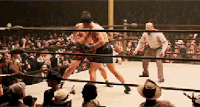
10. “Cinderella Man” (2005) - Russell Crowe starred in this biopic about boxer James J. Braddock and his struggles to survive the Depression via the sport. Directed by Ron Howard, the movie co-starred Renee Zellweger and Paul Giamatti.

11. “Public Enemies” (2009) - Johnny Depp and Christian Bale starred in this biopic about the exploits of Depression-era gangster John Dillinger and the efforts of F.B.I. Special Agent Melvin Purvis to capture him. Michael Mann directed.
#the group#the group 1966#sidney lumet#bonnie and clyde#bonnie and clyde 1967#arthur penn#Great Depression#prohibition#1930s#sounder#sounder 1972#martin ritt#paper moon#peter bogdanovich#the sting#the sting 1973#george roy hill#the untouchables#the untouchables 1987#brian de palma#o brother where art thou#coen brothers#joel coen#ethan coen#road to perdition#road to perdition 2002#sam mendes#seabiscuit#seabiscuit 2003#gary ross
33 notes
·
View notes
Text
Essex County (The Jesuit Sports Union)
The American Government:
Ever wonder why the Americans, won't let anybody win?
Bill Clinton, saved NAFTA, but Rush Limbaugh's TV show had already taken him down for funeral debt, as if racist; his MI-6 ties in Canada, demonstrated.
George W. Bush, won the War on Terror, by framing himself as German, actually Turkish, the Diner's Association, the defense attorney's union; the prison chaplins. Yet Charles Manson, framed him as gay, through Metal Wolf Chaos, for having a Vice President with a lesbian daughter (frauded in courts, kidnapping with more than one charge, schizophrenia of womanhood).
Barack Obama, had stolen a speech sample, through Rahm Emmanuelle, from another Charlebois, so the Fiqh's state embassy, would be frauded as Jesus, taken from Doubting Thomas, the same student, David Charlebois; the Temple on the Mount, intended for an academic thief, the scurrilous Rahm Emmanuele labeling Hoover on the Presidency, denoued from Grant, defrauded by his children through wage of debt of Salvation Army; Five Points Gang, child through nominated theft of Inquisitor to return to origin for grocery trade of common good; Alcoholics Anonymous and Narcotics Anonymous, refused of independence of poor to cook and clean on their own, psychiatric traditions of anti-Semites, Slavics.
Donald J. Trump, elected by drug use among CIA, DEA, and ATF, propaganda unions, falsely advertised on internet by Air Force and Army, movie fans; Westerns, Moorish food traditions, government separatists, like at Ruby Ridge. Never meant to be President, having miswriitten a self-help to become a billionaire, instead of already being one, he's been pawned and traded as an MI-6 mule and donkey, opposing the CIA's tradition of considering film as pederasty, supporting white trash parents, MMA and prize fighting and "Hindu Boxing", dog fights by black men, "Negros", Checkers and Horror film fans, Africans and Jews of the lower South.
Biden, Italian-Sicilian, has been fed Italian food meant for French, rumored to be "Jews", by Germans and Yugoslavs and Chechnyans, spelling the death of their country; directed by Swedes, through a Jew in the Kennedies, Josh Moen, leading to the Holocaust; arranged by Josh Moen's father, Joseph Kennedy III, as payback for putting him in AA, a full horse radish purge of Jews, for refusing cigarettes and marijuana, mandatory to survive, or else "mentally ill", CBD for Arabs.
5 notes
·
View notes
Text
10 Mind-Bending Movies with Twist Endings to Watch
Are you looking for what to watch on OTT platforms? Well, you’re in luck! We’ve put together a list of 10 mind-bending movies with twist endings that will leave you speechless. So, grab your popcorn and get ready for a rollercoaster of emotions and surprises. Let’s dive right in!
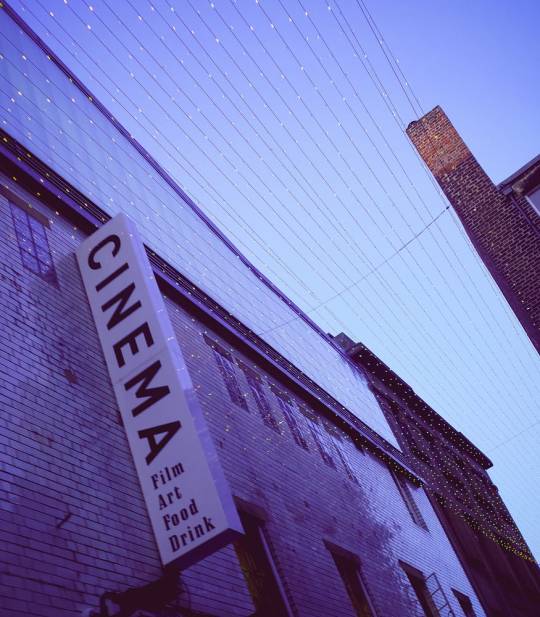
The Sixth Sense (1999):
Director: M. Night Shyamalan
Starring: Bruce Willis, Haley Joel Osment
Plot: A young boy who claims to see and talk to the dead seeks the help of a child psychologist. The twist ending will make you rethink everything you’ve seen.
Fight Club (1999):
Director: David Fincher
Starring: Edward Norton, Brad Pitt
Plot: An insomniac office worker forms an underground fight club as a form of male bonding, but things take a dark turn with a shocking revelation.
The Prestige (2006):
Director: Christopher Nolan
Starring: Hugh Jackman, Christian Bale
Plot: Two rival magicians engage in a bitter rivalry, and their quest for the ultimate trick leads to a mind-bending climax.
Inception (2010):
Director: Christopher Nolan
Starring: Leonardo DiCaprio, Ellen Page
Plot: Dom Cobb, a thief who enters people’s dreams, is tasked with planting an idea into someone’s mind. The film’s ending will leave you questioning reality.
Shutter Island (2010):
Director: Martin Scorsese
Starring: Leonardo DiCaprio, Mark Ruffalo
Plot: U.S. Marshal Teddy Daniels investigates the disappearance of a patient from a mental institution, but the truth is far more complex than he imagined.
Prisoners (2013):
Director: Denis Villeneuve
Starring: Hugh Jackman, Jake Gyllenhaal
Plot: When two young girls go missing, a desperate father takes matters into his own hands, leading to a shocking revelation.
Gone Girl (2014):
Director: David Fincher
Starring: Ben Affleck, Rosamund Pike
Plot: On their fifth wedding anniversary, Nick’s wife Amy disappears, and the ensuing investigation uncovers secrets that will keep you guessing until the very end.
Arrival (2016):
Director: Denis Villeneuve
Starring: Amy Adams, Jeremy Renner
Plot: When mysterious alien spacecraft arrive on Earth, a linguist is tasked with deciphering their language. The film’s conclusion will make you rethink time itself.
Get Out (2017):
Director: Jordan Peele
Starring: Daniel Kaluuya, Allison Williams
Plot: A young African American man visits his girlfriend’s family estate, where things take a chilling and unexpected turn.
Knives Out (2019):
Director: Rian Johnson
Starring: Daniel Craig, Ana de Armas
Plot: A detective investigates the death of a wealthy author, and the movie is filled with twists and turns that will keep you guessing until the final reveal.
These movies are available on various OTT platforms, making them easily accessible for your viewing pleasure. Now, let’s discuss why these movies are worth watching and how they will keep you on the edge of your seat.
Why These Movies Are Worth Watching on OTT:
Engaging Storylines: Each of these movies offers a unique and captivating storyline that will draw you in from the very beginning. You’ll find yourself immersed in the world created by these talented filmmakers.
Talented Cast: With A-list actors like Leonardo DiCaprio, Hugh Jackman, and Amy Adams, you can expect exceptional performances that bring these intriguing characters to life.
Masterful Direction: Directors like Christopher Nolan and David Fincher are known for their storytelling prowess, and their work on these films is no exception. You’re in for a cinematic treat.
Thought-Provoking Themes: These movies explore deep and thought-provoking themes, such as identity, reality, and the human psyche. They’ll leave you pondering long after the credits roll.
Mind-Blowing Twists: Of course, the main attraction of these films is their mind-bending twists. You’ll be left in awe as you try to unravel the mysteries presented on screen.
Perfect for Movie Nights: Whether you’re watching alone or with friends and family, these movies are perfect for a thrilling movie night at home. You can discuss and dissect the twists together.
If you’re wondering what to watch on OTT for an unforgettable movie night, look no further than these 10 mind-bending films. Each one offers a unique and captivating experience that will keep you glued to your screen. From supernatural mysteries to psychological thrillers, there’s something for everyone on this list. So, pick one, sit back, and prepare to have your mind blown by these incredible twist endings. Happy watching!
2 notes
·
View notes
Text
CHRONOLOGY OF AMERICAN RACE RIOTS AND RACIAL VIOLENCE p-6
1994
Survivors of the Rosewood, Florida, riot of 1923 receive reparations.
February Standing trial for a third time, Byron de la Beckwith is convicted of murdering civil rights worker Medgar Evers in June 1963.
1995
In the Cato v. United States decision, the Ninth Circuit Court of Appeals denies African Americans $100 million in reparations and an apology for slavery.
1996
August A federal indictment is handed down against the Ku Klux Klan, which was charged with arson in the burning of more than seventy African American churches in South Carolina.
1997
Oklahoma Legislature creates the Tulsa Race Riot Commission to document and make reparation recommendations regarding the 1921 Tulsa riot.
Debut of the movie Rosewood about the riot in Rosewood, Florida, in 1923.
1998
June Three white men in Jasper, Texas, murder James Byrd, Jr., an African American man, by dragging him behind a truck for three miles.
2000
Representative Tony Hall proposes bill H.R. 356, which would acknowledge and apologize for slavery; the measure does not pass.
2001 April Cincinnati, Ohio, riot.
2002
March Jamil Abdullah Al-Amin (formerly H. Rap Brown) is found guilty of shooting two white deputies and is sentenced to life in prison.
2003
Debut of Stanley Nelson’s film, The Murder of Emmett Till, about the death of a black Chicago boy in Mississippi in 1955.
2004
Survivors of the 1921 Tulsa, Oklahoma, riot receive reparations.
2005
September U.S. Senate passes the Unsolved Civil Rights Crimes Act (known as the ‘‘Till Bill’’), forming a new federal unit within the Civil Rights Division of the Justice Department to investigate and prosecute unsolved civil rights–era murder cases
2 notes
·
View notes
Text
The cast/casting list for the Leopold Loeb movie American Criminals which is in production has been posted by a crew member. Some interesting things I noticed:
* The Leopold parents and Albert Loeb are all listed as lead/supporting roles while Anna Loeb is a ‘Smaller Role: Speaking/featured/cameo’
* Most of the characters are real people from the case, but there are a few made up ones, like Federal Agent Arnold, Wealthy Student: John Crenshaw and Maid Maggie.
* It seems like this movie will be a tad more diverse than the usual Leopold and Loeb fare, the casting calling for ‘African American Family With A Child’ and ‘Older Latino Male (For Latin America Scenes)’ and ‘Sex Worker (For Latin America Scenes)’
* It seems there will be flashback scenes, as child versions of Leopold and Loeb are being cast, as well as school scenes with children, and scenes in the jail or prison.
* Strangely, there isn’t a spot for someone playing Bobby.
For the full list and some photos of the cast you can go to the American Criminals page on the wordpress.
5 notes
·
View notes
Photo

Ernest Whitman (February 21, 1893 - August 5, 1954) was a stage and screen actor. He was billed in some Broadway plays as Ernest R. Whitman. He was born in Oklahoma City and was educated at Tuskegee Institute. He was ordained as a minister in 1907. His participation in Chautauquas led to his becoming an entertainer in vaudeville. He debuted as an entertainer in Purcell, Oklahoma. He performed on stage in The Last Mile and other productions. He sang in a touring production of Lucky Sambo (1927). He appeared in several films, including King for a Day (1934), The Prisoner of Shark Island (1936), The Green Pastures (1936), Jesse James (1939), Gone With the Wind (1939), Third Finger, Left Hand (1940), Among the Living (1941), Road to Zanzibar (1941), Cabin in the Sky (1943), Stormy Weather (1943), The Lost Weekend (1945), My Brother Talks to Horses (1947), Banjo (1947) and The Sun Shines Bright (1953), his last movie. On radio, he was the wartime host of the Armed Forces Radio Service's Jubilee, which was designed for African-American troops and featured mostly African-American entertainers. He portrayed the character Awful on The Gibson Family. He played Bill Jackson on Beulah on the radio and TV. #africanhistory365 #africanexcellence https://www.instagram.com/p/Co7MfFkrBQr/?igshid=NGJjMDIxMWI=
3 notes
·
View notes
Text
What do most of America's mass shootings have in common? White, male culprits
As we watch the heartbreaking aftermath of America’s latest mass shooting, what we must acknowledge is what they have in common.
First, in most of the shootings, the culprits, including the alleged shooter in Thursday’s massacre at Marjory Stoneman Douglas High School in Parkland, Fla., used or owned AR15 assault weapons that shouldn’t be in the hands of anyone except military troops abroad.
Second, most of the culprits of the worst mass shootings since the massacre at Columbine High School in 1999 have been white males.

And for all of you who just set your hair on fire or ran to pick up your phone to call and scream at me that I’m a racist: I do not contend that these boys and men shot up schools or a movie theater or a church because they are white.
I contend that America continues to allow it because they are white …
… because you can be damn sure that if these shootings had been done by black males, there would be calls to round all up the young black men across the country until we could determine what was wrong with them — or until we, the collective we, which means the white we, felt safe. There would be some change in gun laws. There would be action.
And it would be a major, continuing news story rather than one forgotten by Sunday.
It is almost as if we want to forgive these men who for days after their crimes have been referred to as “broken” or “troubled.”
So when Adam Lanza shot and killed 20 children, six teachers, his mother and himself at Sandy Hook Elementary School in Newtown, Conn., in 2012, using an AR15, we moved on. We thought that would be the incident that would change things. He murdered babies just learning to read books and solve math problems, children still leaving teeth for the Tooth Fairy and giving their wishes to Santa Claus. But we moved on.
After Dylann Roof took a handgun and shot nine African-American parishioners to death while they prayed at the Emanuel African Methodist Episcopal Church in downtown Charleston (and was treated to a hamburger by authorities on the way to jail), we moved on.
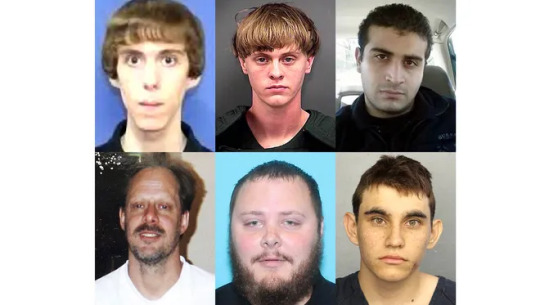
After Omar Mateen shot 99 people — 49 fatally — at the Pulse Nightclub in Orlando in 2016, using an AR15, we moved on.
Even after retired accountant Stephen Paddock shot 909 outdoor concertgoers in Las Vegas — 58 of them fatally and using an AR15 — we moved on.
Even after Devin Kelley shot 26 people to death at a Sutherland Springs, Texas, church in 2017, using an AR15, we moved on.
Now Nikolas Cruz, a 19-year-old former student at Marjory Stoneman Douglas High School, a student who had been expelled and who gave enough warning signs that someone should have seen it coming, went back to his old school, and opened fire with a semiautomatic, yep, you guessed it, AR15 rifle.
By Thursday evening’s news, the death toll had reached 17.
We cannot move on.
That is what must happen next:
First, we must take these shootings seriously and not continue to ignore them because they’re being done by depraved, young white men. We must be up in arms. If they weren’t white, we’d be up in arms. That is not racist. That is based on historical fact. Changing how people get guns, keeping guns from the mentally ill and weapons of war off American streets are not impossible dreams.
Second, we must stop treating black males like murderers when they’re selling cigarettes on a street corner or mass murderers if they are involved in a fight or like drug dealers if they’re caught smoking marijuana and sending them away for long prison sentences — while we do nothing to stop this scourge of mass shootings that has claimed thousands of victims. Many of the predominantly black high schools across Detroit — and in other urban areas — have metal detectors and an attitude of fear. There have been no mass school shootings at these high schools.
Third, we must stop voting for any candidate for any office that accepts money from the National Rifle Association.and stop electing leaders who watch these shootings happen over and over and do nothing about it but spout condolences.
Donald Trump was not wrong in his tweet after the shooting which said:
So many signs that the Florida shooter was mentally disturbed, even expelled from school for bad and erratic behavior. Neighbors and classmates knew he was a big problem. Must always report such instances to authorities, again and again!
There were signs that the shooter was dangerous, signs that were ignored again and again.
Trump also tweeted:
My prayers and condolences to the families of the victims of the terrible Florida shooting. No child, teacher or anyone else should ever feel unsafe in an American school.
But what Trump didn’t do, as is typical, was to go far enough.
America can always use prayer. But America also needs leaders who will put children before the gun lobby.
Trump told children in a televised address that leaders "would do anything to protect you."
Now, America's children will see whether his words have meaning. Because school shootings can no longer be treated like white-collar crimes.
13 notes
·
View notes